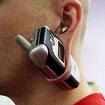Fast "8" Windows XP Tips & Tricks
Delete Files Immediately
This will allow you to delete files from your system without sending them to the recycle bin first.Select Start > Run… type gpedit.msc then select User Configuration > Administrative Templates > Windows Components > Windows Explorer then locate the ‘Do not move deleted files to the Recycle Bin‘ setting and set it.
Faster Start Menu Appearance
Ever wondered why it takes the start menu a few seconds to appear when you click on it? To speed it up, go to Start > Run… Type regedit then navigate to the HKEY_CURRENT_USER/Control Panel/Desktop/MenuShowDelay section and change the value from 400 to 0.
Disable Unneeded Startup Services
Disabling these services will not only make your machine a little safer, but will speed things up a bit. To disable services, go to Control Panel > Administrative Tools > Services and disable the following:
- Alerter
- Clipbook
- Human Interface Access Devices
- Indexing Service
- Messenger
- Net Logon
- Netmeeting Remote Desktop Sharing
- Remote Desktop Help Session Manager
- Remote Procedure Call Locator
- Remote Registry
- Routing & Remote Access
- SSDP Discovery Service
- TCP/IP NetBIOS Helper
- Telnet
- Upload Manager
- Windows Time
- Wireless Zero Configuration
Turning Off The Welcome Screen
Navigate to the Control Panel and select User Accounts then select the option that says Change the way users log on or off.
Speed Up Shared File Viewing across Network
Machines have been known to have a bit of a delay when ever trying to view files shared across a network, due to the fact that Windows is taking the extra time to search and see if the networked computer has any Scheduled Tasks. To prevent Windows from searching for scheduled tasks on a remote computer click Start > Run… Type regedit and navigate to HKEY_LOCAL_MACHINE/Software/Microsoft/Windows/CurrentVersion/Explorer/RemoteComputer/NameSpace and delete the key {D62277990-4C6A-11CF-8D87-00AA0060F5BF}
Speed Up Shutdown Process
Many times, the shutdown process takes a while due to the fact that Windows is trying to clear the Page File. To stop Windows from clearing the Page File on shutdown click Start > Run… type regedit navigate to HKEY_LOCAL_MACHINE\SYSTEM\CurrentControlSet\Control\Session Manager\Memory Management\ClearPageFileAtShutdown and set the value to 0.
Add Your Own Folders To The Send To Menu
Having your own folders in the Send To menu can be a big help. This way, when you right click on something and select Send To you can choose to send it to your very own special folder. To do this navigate to C:\Documents and Settings\username\SendTo\ and simply add your own shortcuts to what ever folders you want to appear.
Launch Any Program From The Run Dialog
We’ve been running applications like regedit by going to Start > Run. Now what if we could launch any application by doing this. We can! To do so, we need to once again, go to Start > Run… and type regedit. Navigate to HKEY_LOCAL_ MACHINE\SOFTWARE\ Microsoft\Windows\ CurrentVersion\App Paths and 1) Add a subkey of the file name you wish to use. For example, Photoshop.exe. Set the default value’s data to the full path of the application. For example, C:\Program Files\Adobe\Photoshop\Photoshop.exe. 2) Create a string value named Path that contains only the path. For example, C:\Progarm Files\Adobe\Photoshop\..
The above Windows XP Tips & Tricks should be used at your own risks'
Have fun and keep looking for ways to improve your Windows XP operating system!




